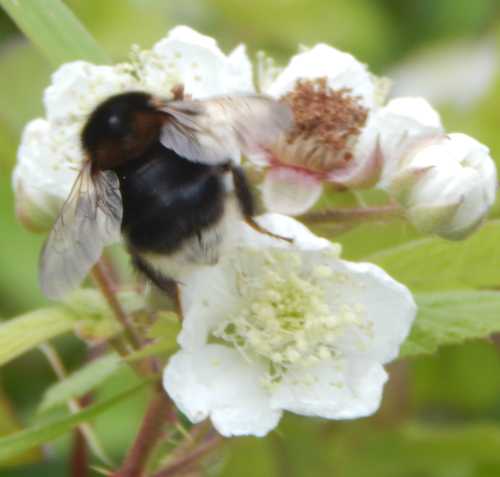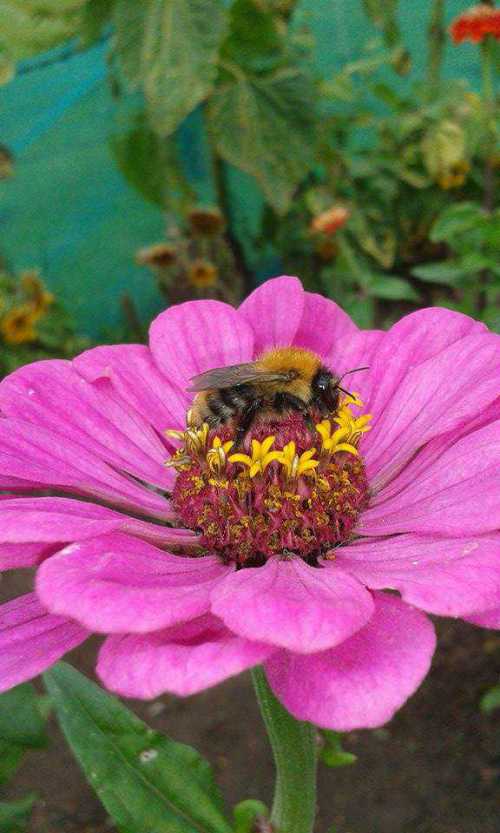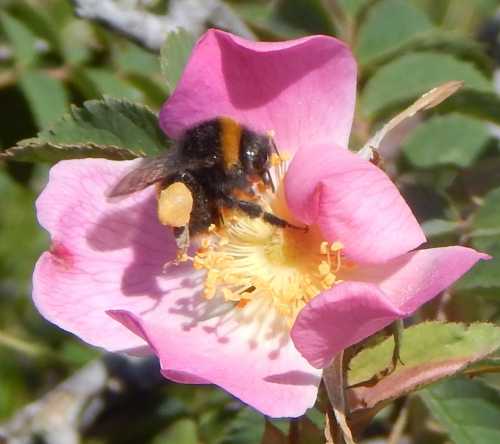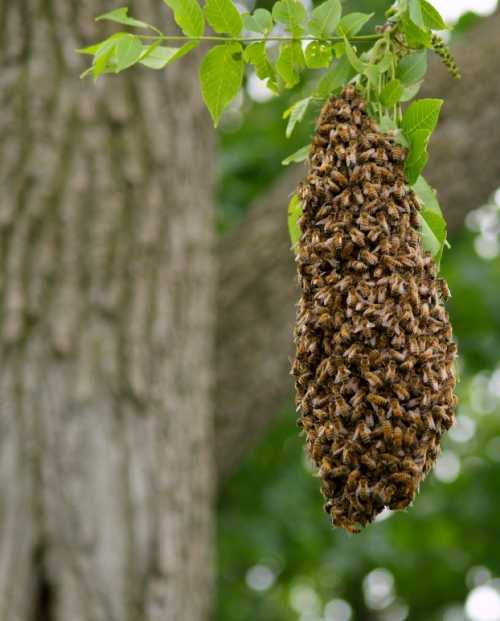How To Catch A Bee Or Bee Swarm
I decided to write this page, having seen a number of other web pages offering information of various kinds about how to catch a bee or swarm of bees.
Catching Bees
In my experience, people have varying motives for wanting to catch bees.
Here I'll loo at the different scenarios I have hears of, and also discuss whether it's wise to catch bees?
1. Catching a queen bumble bee and is it a good idea?
 If you are tempted to try and catch a bumble bee queen for your bee house, please reconsider.
If you are tempted to try and catch a bumble bee queen for your bee house, please reconsider.I have been asked 'how do I catch a bumble bee queen?' several times, usually after people have
purchased bee houses specifically designed for bumble bees.
Having made their
purchase, they are keen to see the bumble bee house in use, and so they think it
would be a good idea to catch a bumble bee queen, and make it stay in the new
house they have bought for the purpose, presumably by keeping it for a little while with a dish of sugar water.
I’m afraid I do not recommend this at all, for several
reasons:
- The
bumble bee queen may already have begun to establish a colony – the bee’s
efforts and possibly best chance, may now be hampered due to capture.
- The
species you catch may not naturally nest in the kind of habitat you are
offering, for example, some species prefer to nest on top of tussocky grass,
therefore, it may never settle in the space you provide.
- You
may have trapped a rare or endangered species – how would you know? Better to leave bees alone so that they can
locate the best site for their needs, and the right conditions generally, where
there is ample quantity of the right kind of food (different bee species may
forage on different plants).
- You
may not have caught a queen, but a worker, which ordinarily provides colony
support to ensure survival of future colonies – read more about the bumble bee
lifecycle.
- If you are intending to trap the bee for a while and feed it with sugar water, this will mean the bee is not getting the nutrients it needs from nectar and pollen.
It may need pollen to help its ovaries ripen and provide much needed protein, or provide nutrition for developing larvae. Nectar from different flowers supplies other nutrients and sugar water is hardly a good substitute.
The only time I ever recommend giving sugar water is if the bee is in dire need of help - but it is a last resort, and the intention is always to release the bee as soon as possible so that it can forage naturally.
Meanwhile, wild bees should never be fed honey, since it can carry microscopic viruses and diseases.
My advice to you if you have purchased a bumble bee nest
box, or indeed if you have made one, is to add a little hamster bedding or
clean dry moss inside, and site the nest in an appropriate sheltered spot in
the shade, then focus on filling your garden with flowers.
You may have to wait a year or more, and note that if a mouse uses the box first, then this is a good sign – bees like abandoned rodent nests!
See my other gardening for bees gardening for bees tips here.
2. Catching a bee to rescue it
I usually receive queries about catching bees in order to rescue them from inside greenhouses or inside the home.
 Common carder bumble bee on zinnia flower.
Common carder bumble bee on zinnia flower.If the bee is trapped in your house, I advise being as gentle as possible, keeping calm, and perhaps using an upturned plastic beaker – preferably transparent, to ensure you can see the bee’s legs and don’t trap their feet.
Very carefully slide the beaker over a stiff piece of card.
Alternatively, you can pick up some tips from my page of advice regarding trapped bees.
3. Catch a bee to keep as a pet?
Wild bees are not ‘pets’, regardless of how cuddly they may look (especially bumble bees)!
Furthermore, solitary bees and bumble bees have short life cycles. Given the threats facing bees I appeal to everyone to leave the bees alone to get on with foraging and raising future generations of bees.
If you are wanting to get a close look at bees, you could pop along to your local museum if they have a suitable collection of specimens, where it might be possible to view them beneath a microscope.
 Bees do not make appropriate 'pets'.
Bees do not make appropriate 'pets'.
Alternatively, you could take photographs or view many of
the detailed, labelled photographs of bees freely available for viewing on
line.
You could also learn more by attending guided bee walks or study days, which are becoming increasingly popular with the general public.
Happy bee-geeking!
4. Catching a swarm of honey bees
If you are thinking of catching a bee swarm, I generally advise that you leave it, unless you are a beekeeper and know what you are doing.
A swarm of bees may or may not move on by itself, but locating your nearest beekeeper or beekeeping association is the best action to take.
They will have the necessary skills, experience, knowledge and appropriate hive equipment.
To find your nearest beekeeping association or group, use your local directory (book or online). Alternatively your library or local council may be able to help locate a beekeeper who can assist you.
 It's best to contact a beekeeper if you need assistance with a swarm of honey bees.
It's best to contact a beekeeper if you need assistance with a swarm of honey bees.More articles
- Where Do Bees Go In Winter And Do Bees Hibernate? About winter activity of honey bees, and overwintering or hibernation of bumble bees and solitary bees.
- How Far Do Bees Fly For Food? A look at research to find out what is the foraging range of honey bees, bumble bees and solitary bees?
- Do Bees Sleep? Do they sleep at night, and if so, where and how do we know they are sleeping?
If you found this page helpful or interesting, I'd really be grateful if you would share it with others - if not this page, perhaps another, such as Gardening For Bees.
Thank you so much :) .


